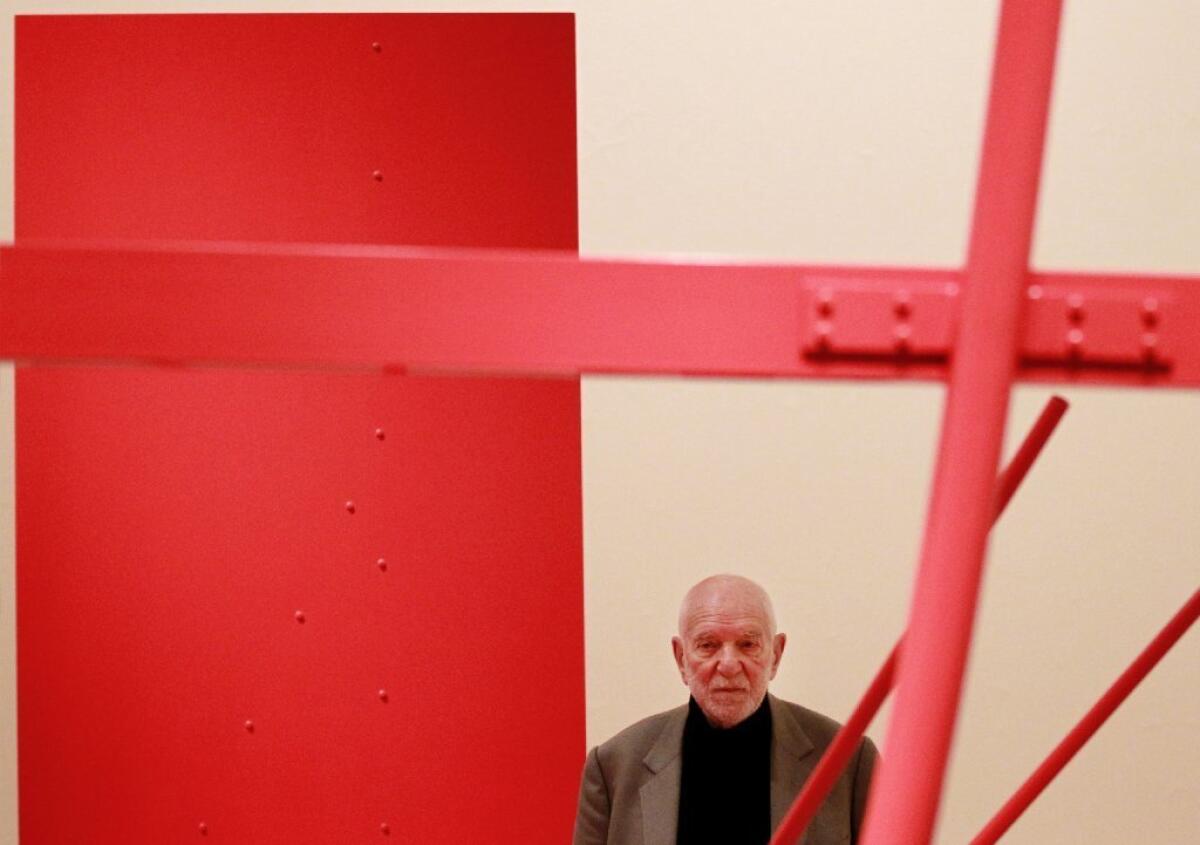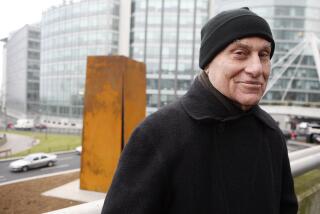Anthony Caro, renowned British sculptor, dies at 89

Sir Anthony Caro, the renowned British sculptor whose abstract creations have been hugely influential, has died. The 89-year-old artist suffered a heart attack and died on Wednesday, said the Tate Museum in London.
Caro is recognized widely for helping to redefine sculpture in the 20th century, often working with steel and other industrial material to create monumental installations that broke with past traditions. His work has been exhibited in major museums and galleries around the world.
He had a major retrospective of his work at the Tate in 2005. That same year, he told The Times that despite the often epic scale of his work, he still relied on the unexpected inspiration.
PHOTOS: Notable deaths of 2013
“The art in sculpture depends in a large part on the immediate putting into real physical materials of the artist’s feelings,” he said. “All my work has about it a degree of spontaneity; this is something I strive for.”
Caro was influenced heavily by the works of British sculptor Henry Moore, to whom he once worked as an assistant, and the renowned American critic Clement Greenberg. He was also inspired by the works of American sculptor David Smith.
Born in 1924 in Surrey, England, Caro grew up in a middle-class household, his father working as a stockbroker. He later studied engineering at Christ’s College, Cambridge, and served in the Royal Navy during World War II.
PHOTOS: Celebrities who died young
His sculpting career took off after the war, when he studied at the Royal Academy Schools, London. The art world began to take notice of his abstract creations in the ‘50s, and his career took off with a show at the Whitechapel Gallery in London in 1963.
Caro’s art often combined sculpture with architecture -- he once worked with Frank Gehry on a large-scale project in New York in 1987. His largest sculpture is believed to be “After Olympia,” an array of abstract shapes created from steel.
ALSO:
Cleveland Museum of Art director abruptly resigns
Top 400 fundraisers: 13 arts and culture groups make the list
Getty Museum says Rembrandt self-portrait is cleared for export
More to Read
The biggest entertainment stories
Get our big stories about Hollywood, film, television, music, arts, culture and more right in your inbox as soon as they publish.
You may occasionally receive promotional content from the Los Angeles Times.











